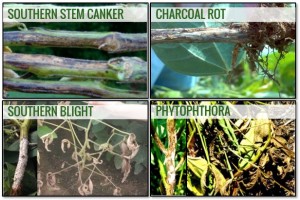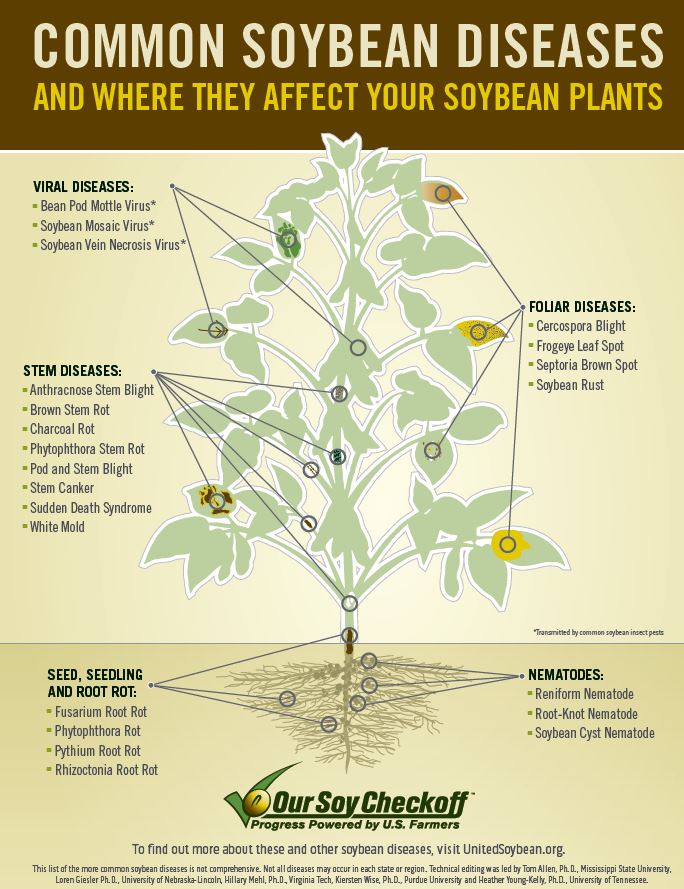With over 75% of the North Carolina soybean crop flowering and 50% setting pods, now is the time to start thinking about how disease pressure may affect your crop. Getting in the field and looking for foliar or stem diseases is critical to determining what diseases are present and if a fungicide application is needed.
There are several diseases that can cause significant yield loss to soybeans in NC. Identifying diseases caused by viruses, fungi, or nematodes is essential. When scouting, some diseases have characteristic symptoms that are easily identified while others may be mistaken for a different disease, abiotic stress, or chemical damage. The best way to correctly identify the diseases in your field is to contact your local extension agent and submit a sample to the NCSU Plant Disease & Insect Clinic. The NCSPA provides funds each year for extension agents to submit samples free of charge. Submitting samples, especially if you see something unusual, is a great way for our plant pathologists to get an idea of disease levels across the state.
Foliar diseases
Foliar disease can affect soybean production in many different ways including reduction in photosynthesis or early senescence of the leaves, both of which can lead to a reduction in yield. Common foliar diseases in North Carolina include Cercospora leaf blight, frogeye leaf spot, and Septoria brown spot.
If you find frogeye leaf spot in your field this year, please contact your county extension agent so they can get a sample for Dr. Lindsey Thiessen. Dr. Thiessen, the NCSU Field Crops Extension Pathologist, is conducting a survey of frogeye leaf spot across the state to determine which areas have populations resistant to the strobilurin class of fungicides. This work is funded by the NCSPA.
Stem and root diseases
Stem and root diseases can result in dead or dying plants in mid-to-late summer, leading to a reduction in yield. Infected stems and roots are typically weak and lodging can also become a problem. Common steam and root diseases in North Carolina include charcoal rot, Phytophthora, southern blight, and stem canker.

Nematodes
Nematodes are probably the most serious disease problem in NC Soybeans. Nematode damage can be detected by looking for areas in the field where plants are stunted or off color. There are six species of nematodes that are of economic importance in NC. The two most easily identifiable are soybean cyst nematode and root-knot nematode.
If you see a rapid decline of plants that looks like it could be nematode damage, contact your county extension agent. Dr. Thiessen is also surveying for different nematode species across the state.
While scouting to determine which fungicides to apply and when is important, scouting also helps you make decisions about coming years. If you know you have areas with nematode or heavy disease pressure, select varieties that are resistant to those problems in future years.










